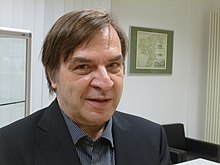
The Final Solution or the Final Solution to the Jewish Question was a Nazi plan for the genocide of individuals they defined as Jews during World War II. The "Final Solution to the Jewish question" was the official code name for the murder of all Jews within reach, which was not restricted to the European continent. This policy of deliberate and systematic genocide starting across German-occupied Europe was formulated in procedural and geopolitical terms by Nazi leadership in January 1942 at the Wannsee Conference held near Berlin, and culminated in the Holocaust, which saw the murder of 90% of Polish Jews, and two-thirds of the Jewish population of Europe.

Heinrich Luitpold Himmler was the Reichsführer of the Schutzstaffel, a leading member of the Nazi Party of Germany, and one of the most powerful men in Nazi Germany, primarily known for being a main architect of the Holocaust.

Reinhard Tristan Eugen Heydrich was a high-ranking German SS and police official during the Nazi era and a principal architect of the Holocaust.

The Wannsee Conference was a meeting of senior government officials of Nazi Germany and Schutzstaffel (SS) leaders, held in the Berlin suburb of Wannsee on 20 January 1942. The purpose of the conference, called by the director of the Reich Security Main Office SS-Obergruppenführer Reinhard Heydrich, was to ensure the co-operation of administrative leaders of various government departments in the implementation of the Final Solution to the Jewish Question, whereby most of the Jews of German-occupied Europe would be deported to occupied Poland and murdered. Conference participants included representatives from several government ministries, including state secretaries from the Foreign Office, the justice, interior, and state ministries, and representatives from the SS. In the course of the meeting, Heydrich outlined how European Jews would be rounded up and sent to extermination camps in the General Government, where they would be killed.
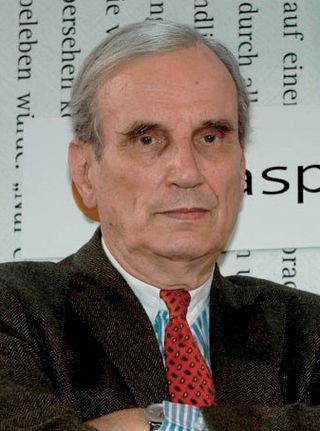
Joachim Clemens Fest was a German historian, journalist, critic and editor who was best known for his writings and public commentary on Nazi Germany, including a biography of Adolf Hitler and books about Albert Speer and German resistance to Nazism. He was a leading figure in the debate among German historians about the Nazi era. In recent years his writings have earned both praise and strong criticism.
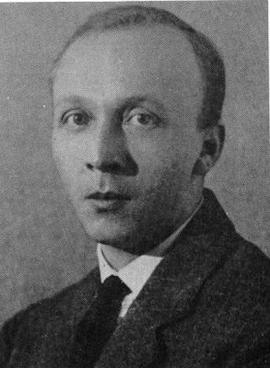
Erhard Heiden was an early member of the Nazi Party and the third commander of the Schutzstaffel (SS), the paramilitary wing of the Sturmabteilung. He was appointed head of the SS, an elite subsection of the SA in 1927. At that time the SS numbered fewer than a thousand men and Heiden found it difficult to cope under the much larger SA. Heiden was not a success in the post, and SS membership dropped significantly under his leadership. He was dismissed from his post in 1929, officially for "family reasons". He was arrested after the Nazis came to power in 1933 and executed that same year.

Karl August Hanke was an official of the Nazi Party (NSDAP) during its rule over Germany and served as the fifth and final Reichsführer of the Schutzstaffel (SS). He also served as Gauleiter of Gau Lower Silesia from 1941 to 1945 and as Oberpräsident of the Prussian Province of Lower Silesia. Captured on 6 May 1945, he was shot and wounded during an escape attempt and then beaten to death by Czech communists on 8 June, after the war had ended.

The Posen speeches were two speeches made by Heinrich Himmler, the head of the SS of Nazi Germany, on 4 and 6 October 1943 in the town hall of Posen (Poznań), in German-occupied Poland. The recordings are the first known documents in which a member of the Hitler Cabinet spoke of the ongoing extermination of the Jews in extermination camps. They demonstrate that the German government wanted, planned, and carried out the Holocaust.

The Nisko Plan was an operation to deport Jews to the Lublin District of the General Governorate of occupied Poland in 1939. Organized by Nazi Germany, the plan was cancelled in early 1940.
The Reich Chancellery meeting of 12 December 1941 was an encounter between Adolf Hitler and the highest-ranking officials of the Nazi Party. Almost all important party leaders were present to hear Hitler declare the ongoing destruction of the Jewish race, which culminated in the Holocaust. The meeting is less known than the later Wannsee Conference.
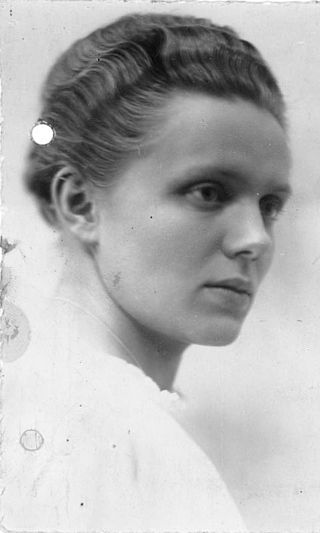
Margarete Himmler, also known as Marga Himmler, was the wife of Reichsführer-SS Heinrich Himmler.

Ernst Hermann Himmler was a German Nazi functionary, electrical engineer and younger brother of Reichsführer-SS Heinrich Himmler.

Ernst-Heinrich Schmauser was a German Nazi Reichstag deputy and SS-Obergruppenführer who was the Higher SS and Police Leader (HSSPF) in Breslau during World War II. He was responsible for the death march from Auschwitz-Birkenau concentration camp, in which upwards of 25 percent of the prisoners were killed. In the last months of the war, he was captured by the Red Army and presumed killed.

Oliver Hilmes is a German author who has written several historical biographies. His study of Cosima Wagner, the daughter of the 19th century composer Franz Liszt and his biography of Alma Mahler a Viennese-born socialite, have been translated into English.
Martin Geck was a German musicologist. He taught at the Technical University of Dortmund. His publications concerned a number of major composers. Among the composers in whom he specialised was Johann Sebastian Bach.
During the National Socialist era, "Aryan persons" who lived in so-called "mixed marriages" with a "Jewish person" were referred to as "jüdisch versippt". "Jüdisch Versippte" were discriminated against; they were excluded from certain professions and career opportunities, dismissed from public service, and, from 1943, were deemed as "unworthy of military service" and were used for quartered forced labor in "Sonderkommandos" of the Organization Todt.
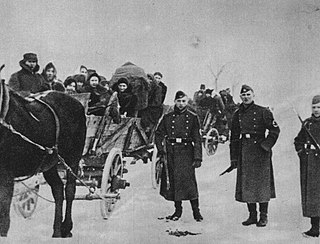
During the Holocaust, 99% of the Jews from Lublin District in the General Governorate of German-occupied Poland were murdered, along with thousands of Jews who had been deported to Lublin from elsewhere. There were three extermination camps in Lublin District, Sobibor, Belzec, and Majdanek.

Dr. Eckart Conze is a German historian, author, and professor of modern history at the University of Marburg in Hesse.
Rüdiger Schaper is a German writer, journalist and theatre critic.

Magnus Otto Bridges von Levetzow was a German naval officer who rose to the rank of Konteradmiral. He became a Nazi Party politician and served as the Police President of Berlin from 1933 to 1935.
